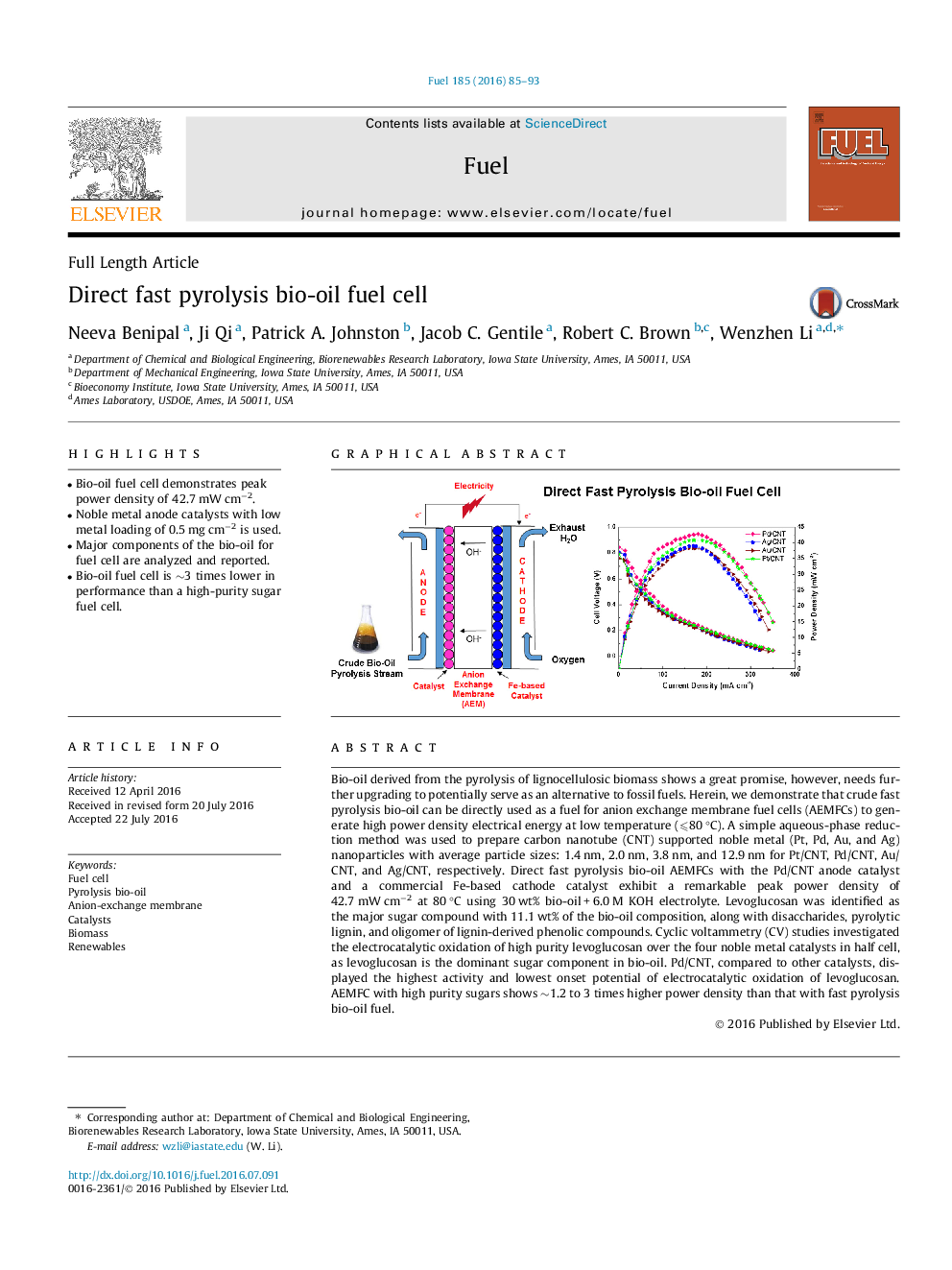| Article ID | Journal | Published Year | Pages | File Type |
|---|---|---|---|---|
| 204879 | Fuel | 2016 | 9 Pages |
•Bio-oil fuel cell demonstrates peak power density of 42.7 mW cm−2.•Noble metal anode catalysts with low metal loading of 0.5 mg cm−2 is used.•Major components of the bio-oil for fuel cell are analyzed and reported.•Bio-oil fuel cell is ∼3 times lower in performance than a high-purity sugar fuel cell.
Bio-oil derived from the pyrolysis of lignocellulosic biomass shows a great promise, however, needs further upgrading to potentially serve as an alternative to fossil fuels. Herein, we demonstrate that crude fast pyrolysis bio-oil can be directly used as a fuel for anion exchange membrane fuel cells (AEMFCs) to generate high power density electrical energy at low temperature (⩽80 °C). A simple aqueous-phase reduction method was used to prepare carbon nanotube (CNT) supported noble metal (Pt, Pd, Au, and Ag) nanoparticles with average particle sizes: 1.4 nm, 2.0 nm, 3.8 nm, and 12.9 nm for Pt/CNT, Pd/CNT, Au/CNT, and Ag/CNT, respectively. Direct fast pyrolysis bio-oil AEMFCs with the Pd/CNT anode catalyst and a commercial Fe-based cathode catalyst exhibit a remarkable peak power density of 42.7 mW cm−2 at 80 °C using 30 wt% bio-oil + 6.0 M KOH electrolyte. Levoglucosan was identified as the major sugar compound with 11.1 wt% of the bio-oil composition, along with disaccharides, pyrolytic lignin, and oligomer of lignin-derived phenolic compounds. Cyclic voltammetry (CV) studies investigated the electrocatalytic oxidation of high purity levoglucosan over the four noble metal catalysts in half cell, as levoglucosan is the dominant sugar component in bio-oil. Pd/CNT, compared to other catalysts, displayed the highest activity and lowest onset potential of electrocatalytic oxidation of levoglucosan. AEMFC with high purity sugars shows ∼1.2 to 3 times higher power density than that with fast pyrolysis bio-oil fuel.
Graphical abstractFigure optionsDownload full-size imageDownload as PowerPoint slide
